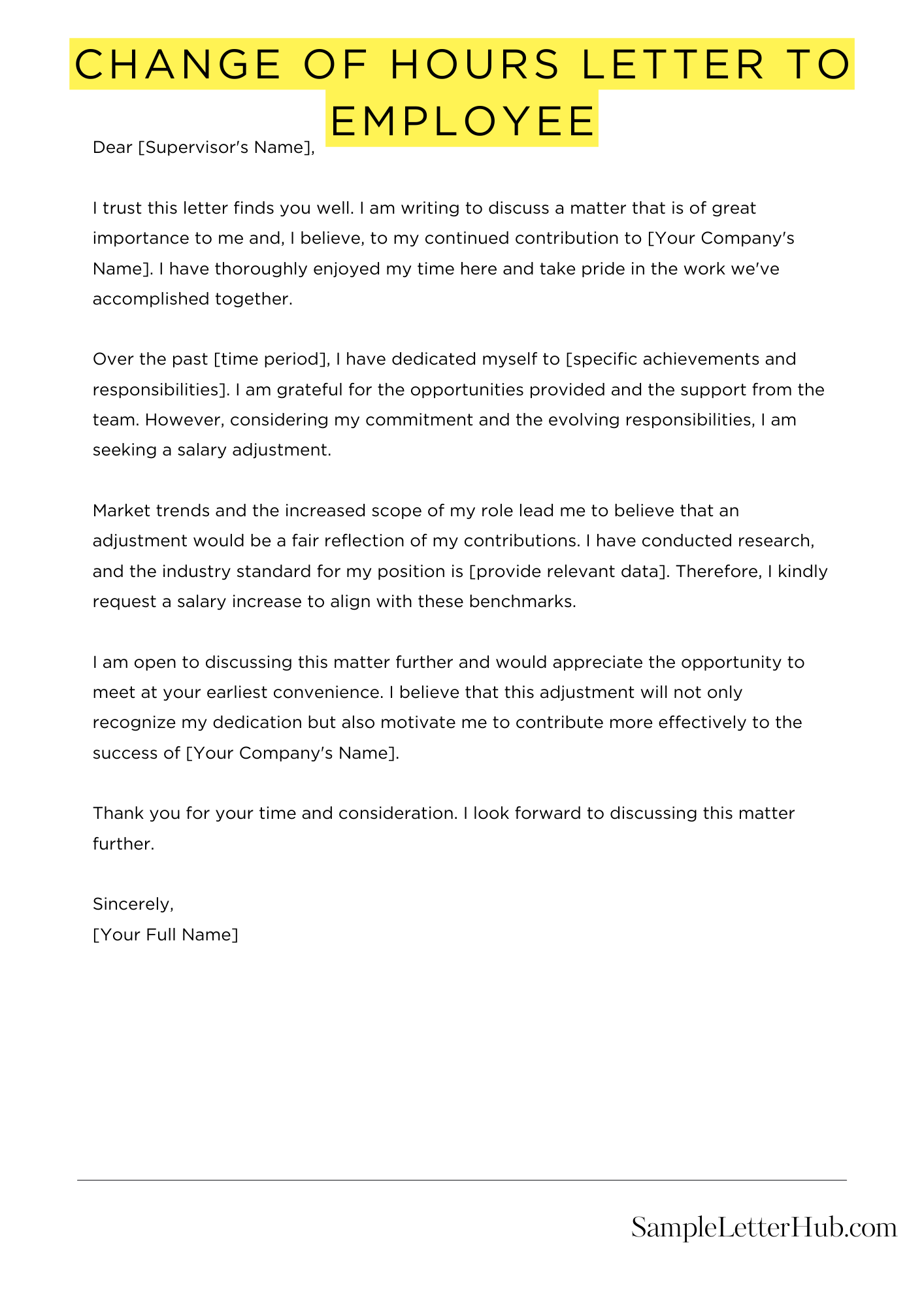

A “Change of Hours Letter to Employee” is a formal document that informs an employee about a change in their work schedule. It is typically used when an employer needs to adjust an employee’s hours due to business needs or other circumstances. The letter should clearly state the new work hours, the effective date of the change, and any other relevant information.
In this article, we will provide you with several templates, examples, and samples of Change of Hours Letters to Employee. These templates are designed to make it easy for you to write a clear and concise letter that meets your specific needs. Whether you are an employer or an employee, these templates will help you to communicate changes in work hours in a professional and respectful manner.
Dear [Employee Name],
We hope this letter finds you well.
We are writing to inform you of a change in your work hours, effective [date]. Your new hours will be [new hours].
This change is necessary due to [reason for change]. We understand that this may be an adjustment, and we appreciate your understanding.
We believe that this change will ultimately benefit both you and the company. It will allow us to [benefits of change].
We are committed to making this transition as smooth as possible. Please let us know if you have any questions or concerns.
Thank you for your cooperation.
Sincerely,
[Your Name]

Writing a change of hours letter to an employee can be a daunting task. However, by following a few simple steps, you can ensure that your letter is clear, concise, and professional.
The first step is to state the purpose of the letter. This will help the employee to understand why they are receiving the letter and what is expected of them.
Once you have stated the purpose of the letter, you need to be specific about the changes that are being made. This includes the new hours of work, the days of the week that the employee will be working, and any other relevant information.
It is important to provide a rationale for the changes that you are making. This will help the employee to understand why the changes are necessary and how they will benefit the company.
Once you have provided a rationale for the changes, you need to be clear about the employee’s responsibilities. This includes what tasks they will be expected to perform and when they will be expected to perform them.
It is important to be positive and supportive in your letter. This will help the employee to feel more comfortable with the changes and more likely to accept them.
Before you send your letter, be sure to proofread it carefully. This will help to ensure that there are no errors in the letter and that it is clear and concise.
Once you have proofread your letter, you can send it to the employee. You can send the letter via email, mail, or hand delivery.
A change of hours letter is a formal document that an employer sends to an employee to inform them of a change in their work schedule.
A change of hours letter should include the following information:
A change of hours letter should be written in a clear and concise manner. It should be easy for the employee to understand the new work schedule and the reason for the change.
Here are some tips for writing a change of hours letter:
If you receive a change of hours letter, you should review the letter carefully and ask your employer any questions you may have. You should also make sure that you understand the new work schedule and the reason for the change.